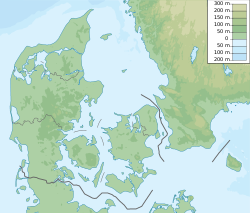Par force hunting landscape in North Zealand

Deer at the Hermitage Lodge in Jægersborg Dyrehave
|
|
| UNESCO World Heritage Site | |
|---|---|
| Location |
Denmark |
| Includes |
Gribskov, Jægersborg Dyrehave, Store Dyrehave |
| Criteria | ii, iv |
| Reference | 1469 |
| Coordinates | 55°54′N 12°24′E / 55.9°N 12.4°E |
| Inscription | 2015 (39th Session) |
|
[]
|
|
The Par force hunting landscape in North Zealand is a collection of hunting grounds and forests north of Copenhagen, inscribed on the UNESCO List of World Heritage Sites on 4 July 2015. The landscape comprises three main areas: Store Dyrehave, Gribskov and Jægersborg Dyrehave/Jægersborg Hegn. The landscape was submitted for admission on 1 August 2010.
The three forests are all located in the North Zealand peninsula to the north of Copenhagen. Jægersborg Dyrehave with the fenced Jægersborg Hegn is closest to the capital on the peninsula's east coast. The square-shaped Store Dyrehave is located further to the north in the centre of the peninsula while Gribskov, further north still, is adjacent to Esrum Sø. Store Dyrehave and Gribskov are not far from Frederiksborg Palace and the town of Hillerød
The forests and related buildings in three locations to the north of Copenhagen form parts of a well-preserved Baroque hunting landscape designed in the late 17th and early 18th centuries for the Danish monarchs to participate in par force hunting. The history of the area for hunting dates back to the Middle Ages when the Danish kings, the church and noblemen had estates and hunting grounds in the peninsula's hilly forests and undulating farmlands. In connection with the Danish Reformation, in 1536 King Frederick II confiscated the estates belonging to the Catholic Church. From 1560, the various estates were merged in order to establish an extensive royal hunting park across the North Zealand peninsula. It was however King Christian V who from 1670 put his army to work on creating a par force deer park around Ibstrup Castle. In his youth, the king had experienced par force hunting in France's forest of Saint-Germain-en-Laye. He now imported hounds and huntsmen from England, renaming the castle Jægersborg (hunter's castle) and the estate Jægersborg Dyrehave (Jægersborg deer park).
...
Wikipedia

